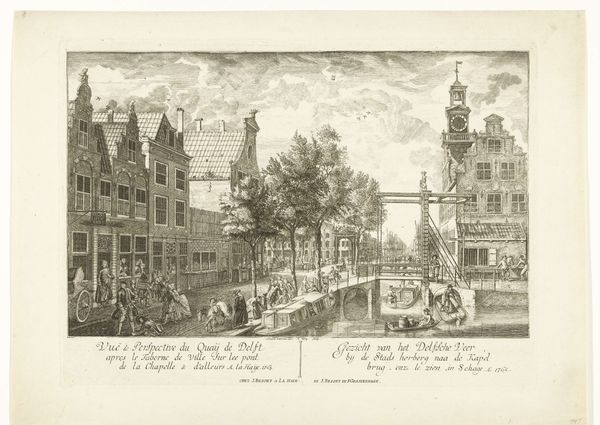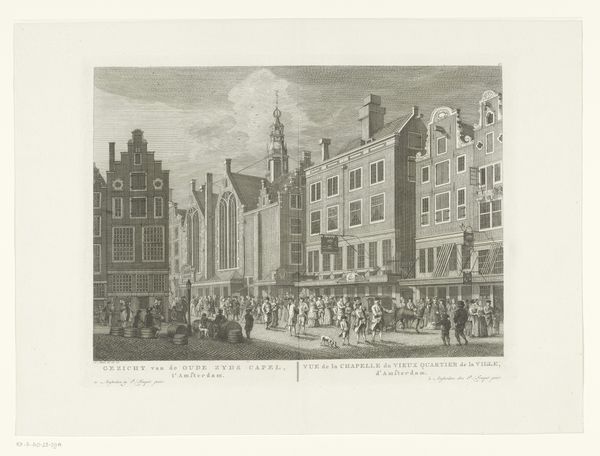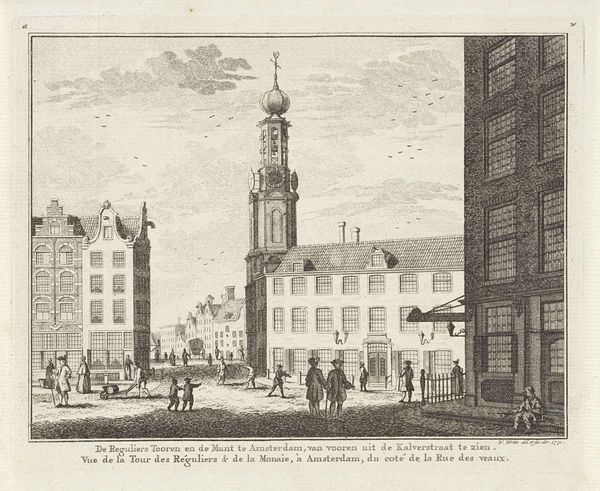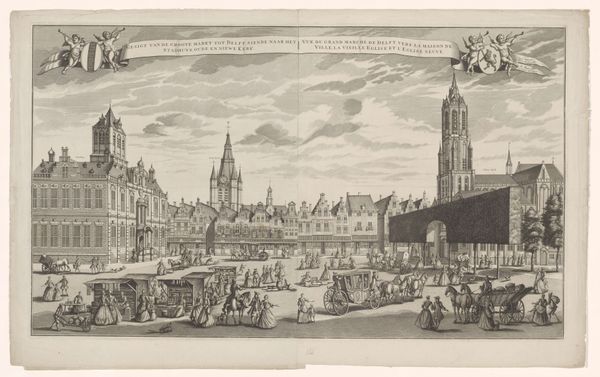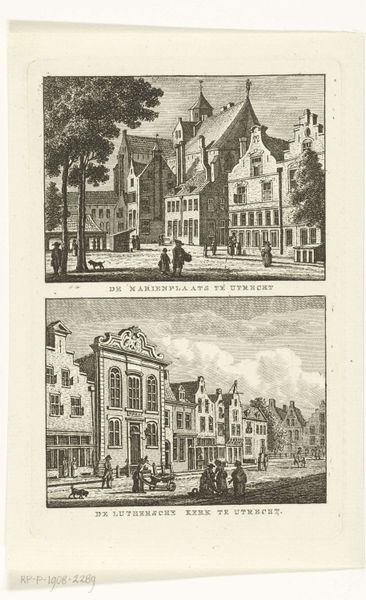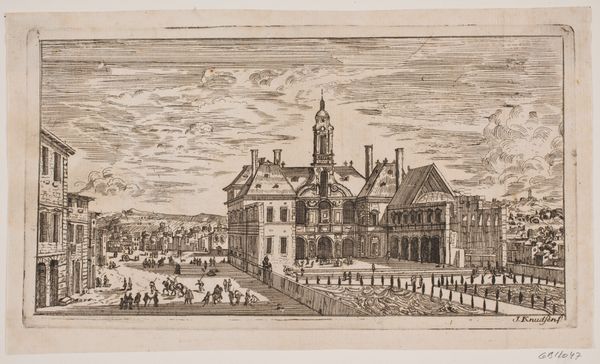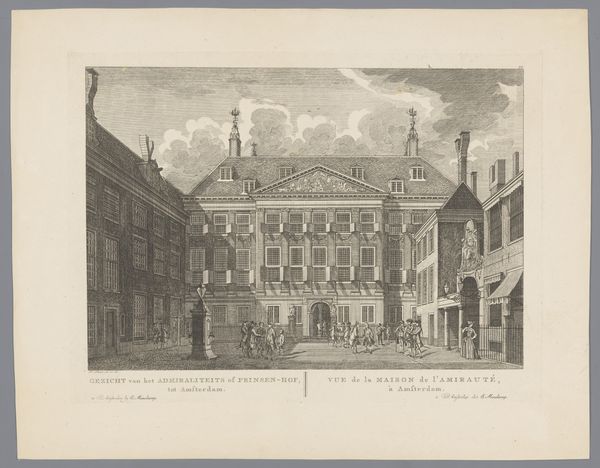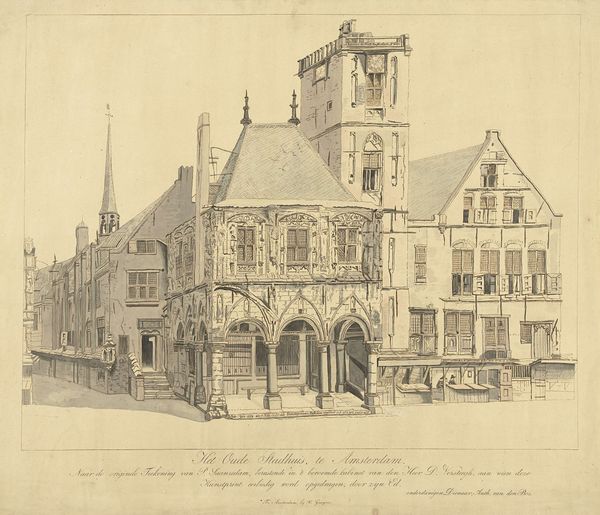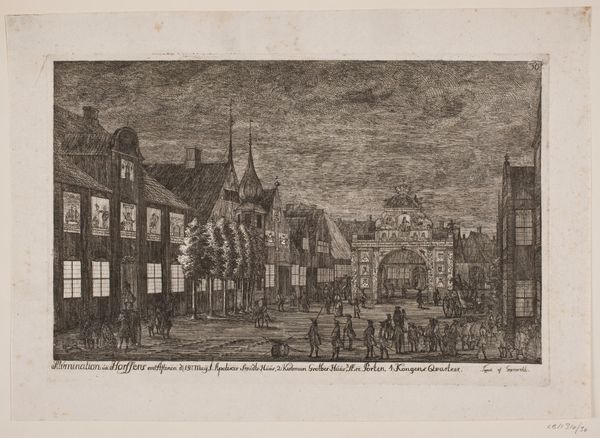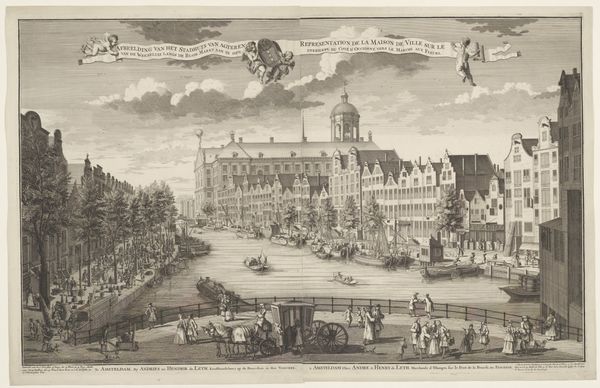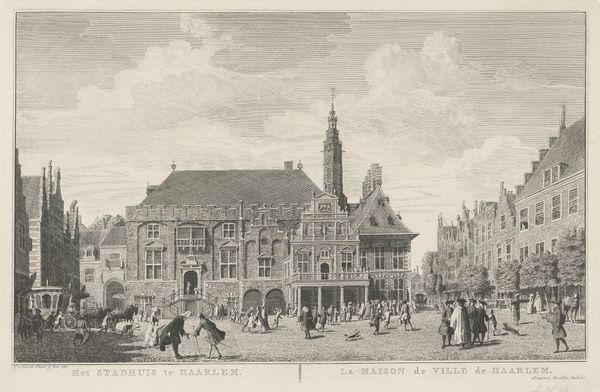
Dimensions: height 255 mm, width 352 mm
Copyright: Rijks Museum: Open Domain
Curator: This print, dating from around 1760 to 1783, offers us a view of the "Mannen-Tuchthuys" or "Rasphuis" – Amsterdam's male correctional institution. Editor: It's stark, isn't it? A very architectural feel, with the buildings looming. You can almost feel the weight of the institution. What process was used for this image? Curator: It's an etching and engraving. Look closely and you’ll see the fineness of the lines used to depict the architecture. They've given great detail to the texture of the facades, all rendered in tones of grey. The architecture practically symbolizes the societal structures of justice. Editor: Right, those linear marks. And thinking about materials – copperplate for the etching and engraving... How many impressions could one make before the matrix started to break down? Also, let's not forget the labor of the artisans translating architectural grandeur into reproducible form. These prints democratized access to seeing that grandeur, right? Curator: Precisely. The architectural details certainly speak of power, with a central gateway topped by figures that recall classical virtue. We can think of those sculptures not only in the light of moral authority but the cultural continuity, reaching back to Roman ideals, and how that imagery might impress on the building’s inhabitants, intended as a visual lesson of restraint and reform. Editor: Absolutely. And looking at the figures in the foreground, the material conditions of daily life seem equally important. I am looking to see who occupies this street – you can see it isn't just about representing the architecture as an entity – people populate the sidewalks, the marketplace at left. The act of labor is really inscribed on the image by its details, with clear marks visible of production. What’s the artist’s name here, I don't see any attribution? Curator: The artist is unknown! So we can only speculate about who made it. And in thinking about that unknown artist, we’re considering the unseen labour that allows us to reflect on societal themes. Editor: Indeed, a faceless artist highlighting structures meant to contain others! Makes you ponder about anonymity, artistic production, and the echoes of labor and power we uncover by dissecting this print's means of production.
Comments
No comments
Be the first to comment and join the conversation on the ultimate creative platform.
